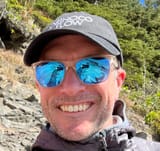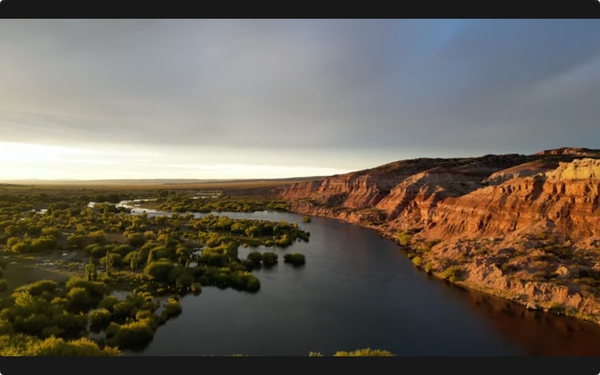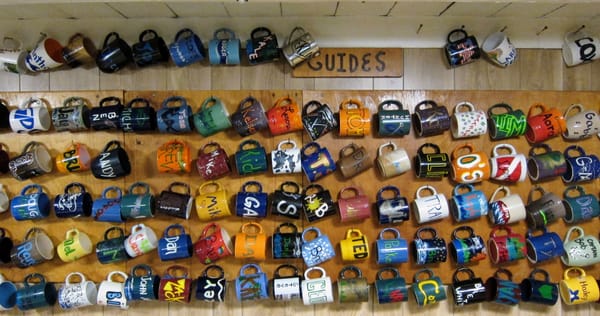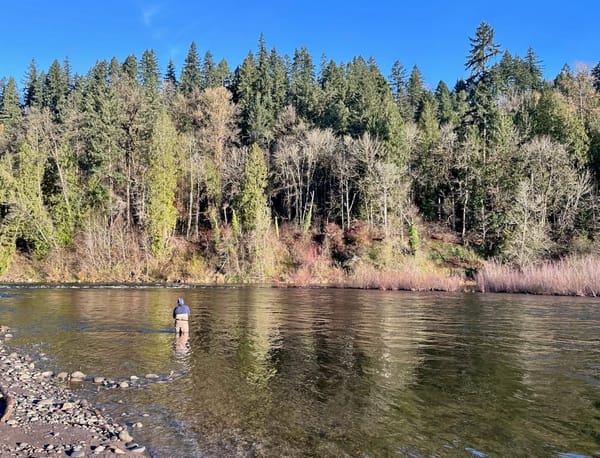Seeing salmon, seeing snakes, and tying simple flies
Facial recognition, but for fish, our first buzzworm of the year, and a new PCC fly-tying class for Fall Term
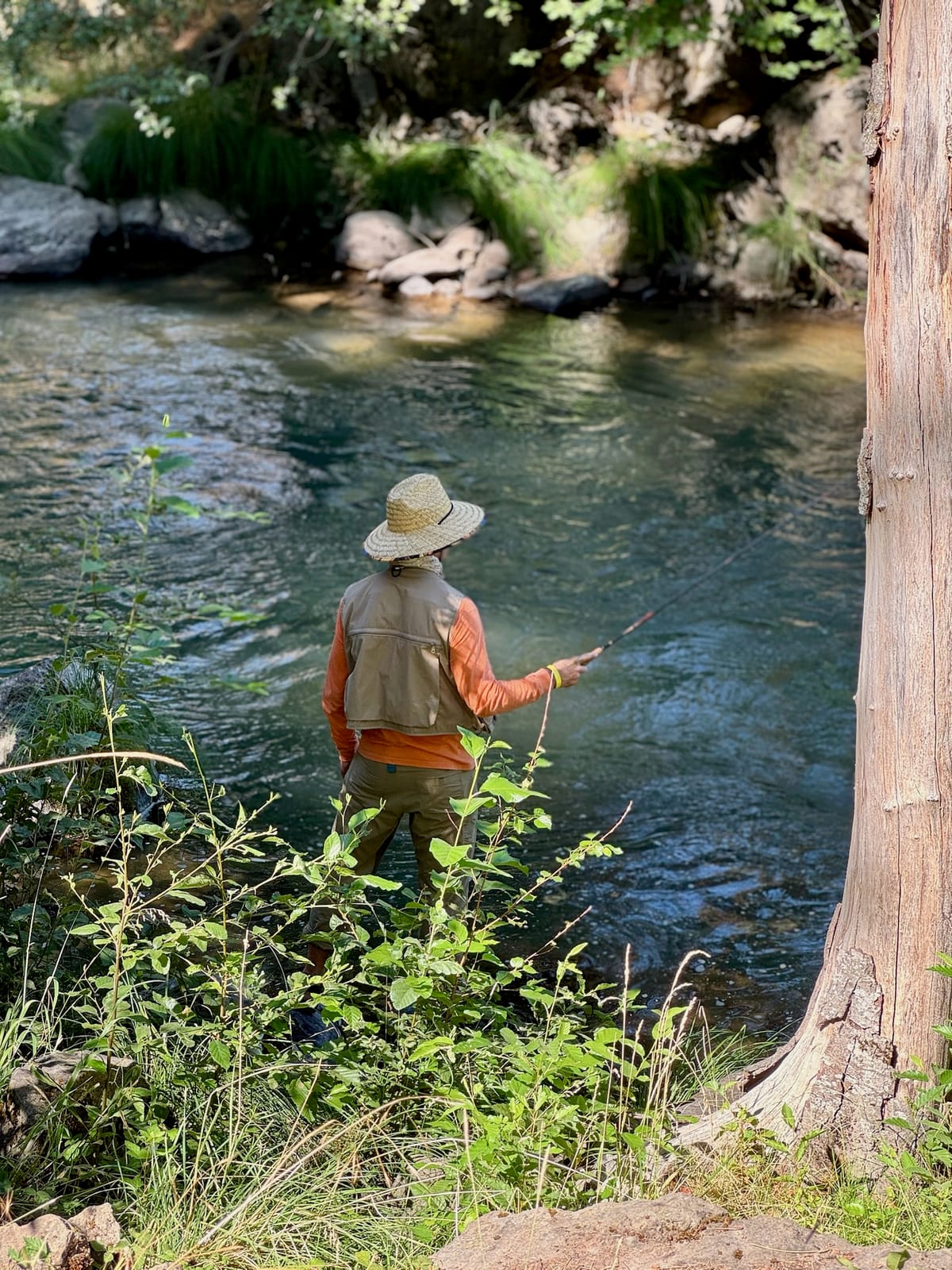
CFStranauts: Hope you're squeezing the marrow out of summer. I'm feeling particularly marrow-gorged after a long weekend.
Facial recognition, for fish
I know what you're thinking: "Ugh, this is a fishing newsletter. I'm hearing about AI everywhere."
But this one's a little different. We're not talking about generative AI writing slop fishing stories in the voice of John Gierach. Or cranking out videos of prehistoric fanged salmon, coming up to slam a swung muddler. We're talking about a major tech-led conservation effort to make counting migrating salmon easier and more accurate.
AI isn't all bad. It's already tangled up in many forms of technologies we use every day, from PIN processing to object identification. And from what the Salmon Vision project leaders say, they're powering their edge systems with renewables (solar plus batteries). Give it a read here.

One broader thing I want from AI companies is an effort to quantify what the real costs of advanced large language model processing are, in terms of energy and water use.
French AI company Mistral did just this last week, moving to push a global environmental standard for AI. Here's what it costs to generate a single page of text on the service:
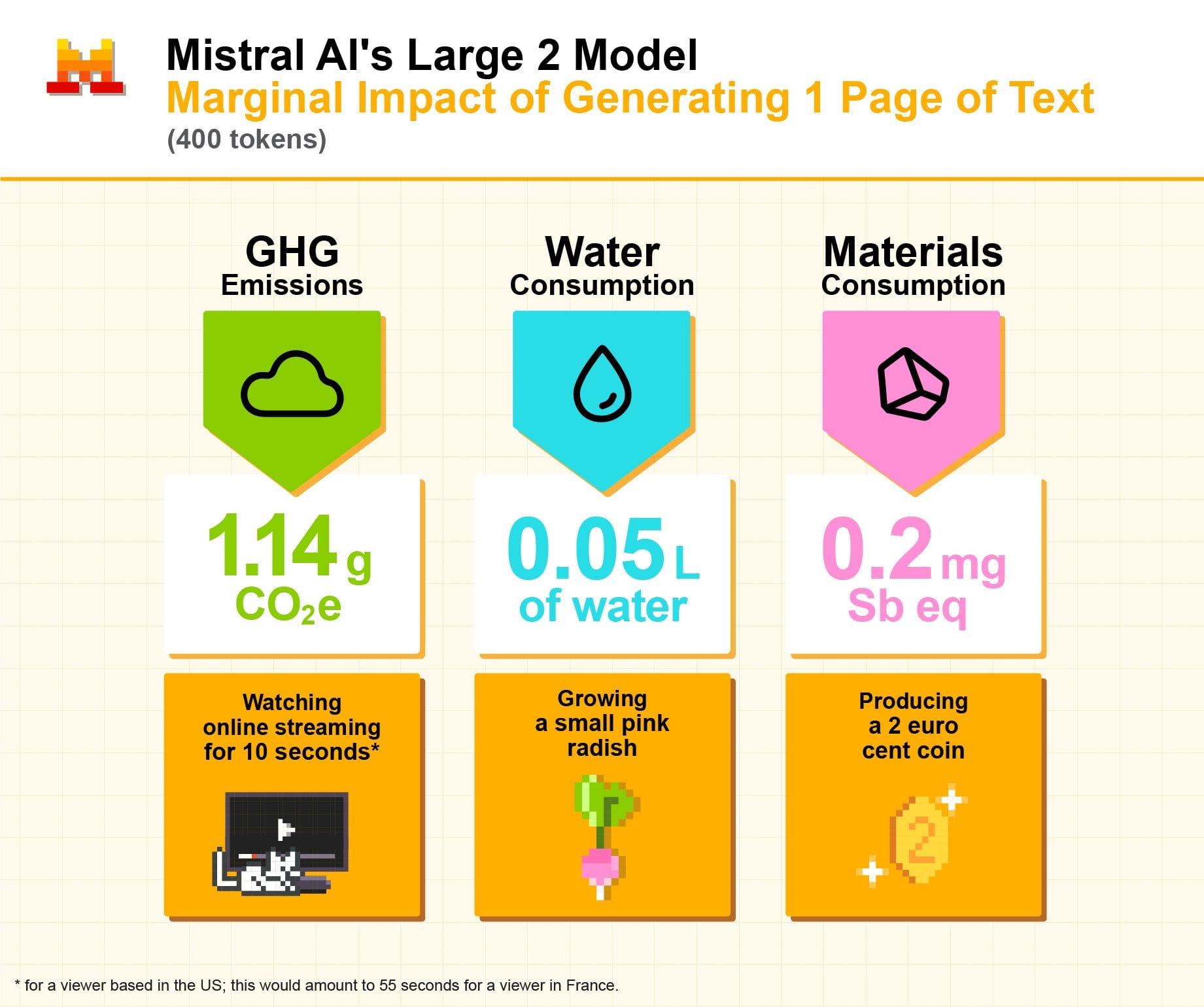
Transparency about this information helps inform us citizens of how we might respond from a policy level. Like when a large technology company wants to come to town and get a sweetheart deal from the local municipality to suck up billions of gallons of groundwater in exchange for a few dozen jobs. Or wants to build a gas-burning methane plant upwind from a community. And maybe it'll make all of us think twice about the cost of generating that tenth image of our cat going fly fishing.
Snake fest
In entirely non-digital, real af experiences, I had my first rattlesnake encounter of the season on Saturday morning.
Buddy Ana and I were taking turns with the tenkara rod tight-lining nymphs through a small run. And when it was time to clamber back up to the road from the bank, we heard the distinctive song of the Crotalus people.
Not as deep and hard as you'd probably imagine. More high-pitched, which meant it It was a small-ish specimen. This one was hiding under a rock shelf, probably looking for a mouse or some lizards for breakfast.
If you're fishing in Eastern Oregon, or anywhere in the arid West, this will happen to you at some point. Here's the most important thing you can do when it does: Don't panic. Hearing the rattle is a good thing. Just give the snake a wide berth. Ana stopped, backed down the way she came, we took a moment, and moved up to the road a few feet away.
Here's another thing to remember: If you are ever bit by a rattlesnake, the same advice applies. Don't panic. According to the NIH, the combined morality rate for rattlesnake bites in the US from 1983 to 2007 was .1%.
In the United States, approximately 9,000 people per year suffer a snake bite, but only five deaths occur. Interestingly, poison center data shows that one in 736 patients who suffer a rattlesnake bite actually dies. Oftentimes, the victim of a rattlesnake bite is a young intoxicated male.
If you're worried, be sure you know where the nearest hospital is, and call ahead if you're extra concerned, to make sure they have antivenin on hand. And don't be a young intoxicated male (who is probably messing with the snake).
As summer steelhead season picks up on the lower Deschutes, I expect we'll be encountering more snakes. A metal wading staff, which I almost always carry to navigate the big heavy current, doubles as a good tapper. I tap rocks regularly, and carry a bigger stomp in my step in areas that feel snakey. And don't put your hands into areas where you can't see, like if you're trying to clamber over a rock pile to get out of a bank spot.
Here's a good article from this quarter's Montana Outdoors talking about training dogs for rattlesnake safety around dogs, with some helpful general information besides. The kid is a little snake fearful, so I'm trying get her accustomed to co-existing with these cool creatures in a way that's curious and informed rather than worried.
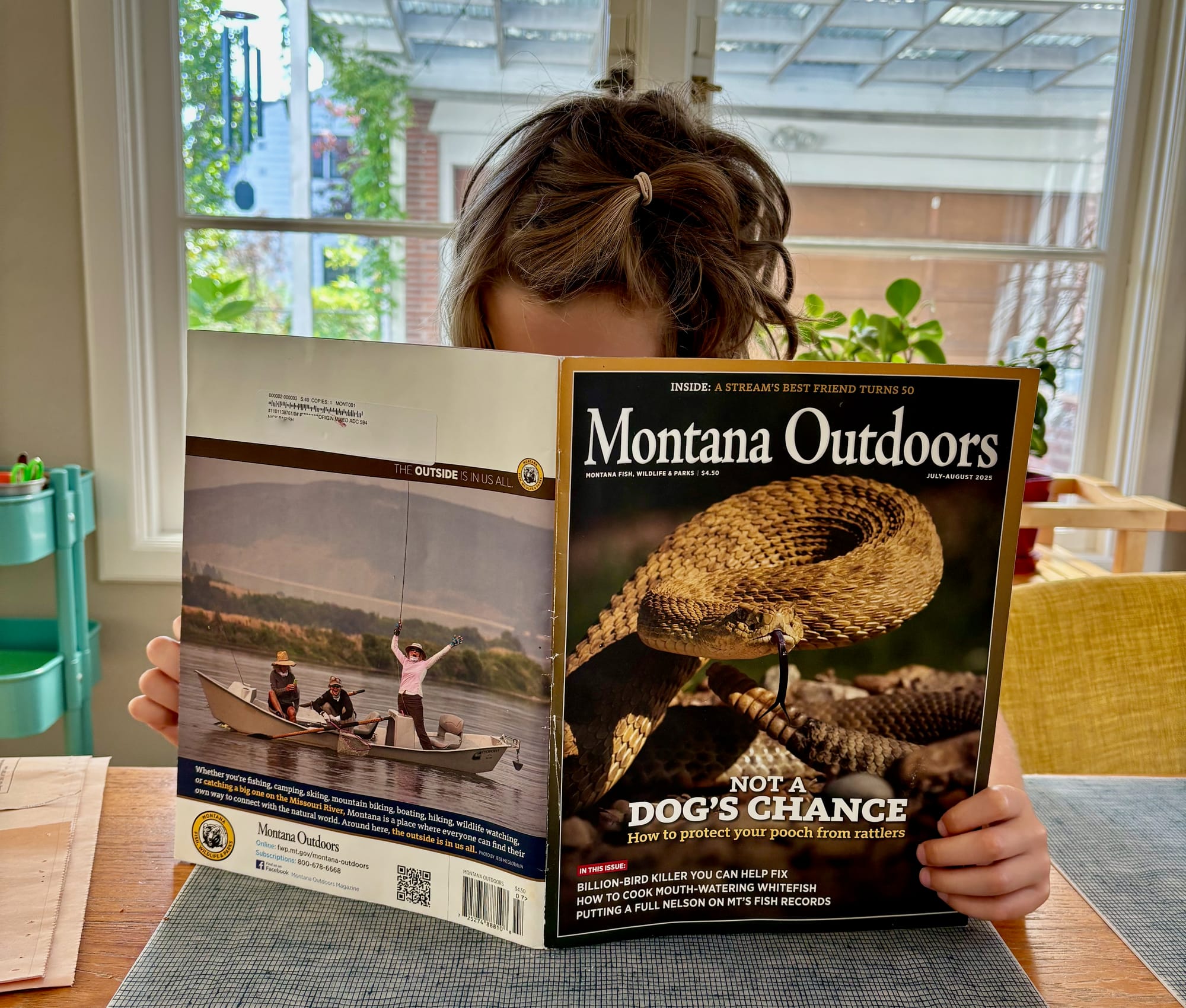
Join us at the next book club
RSVP today for our next Read By the River virtual book club on August 27th. Find out more on our book selection, and what to expect:
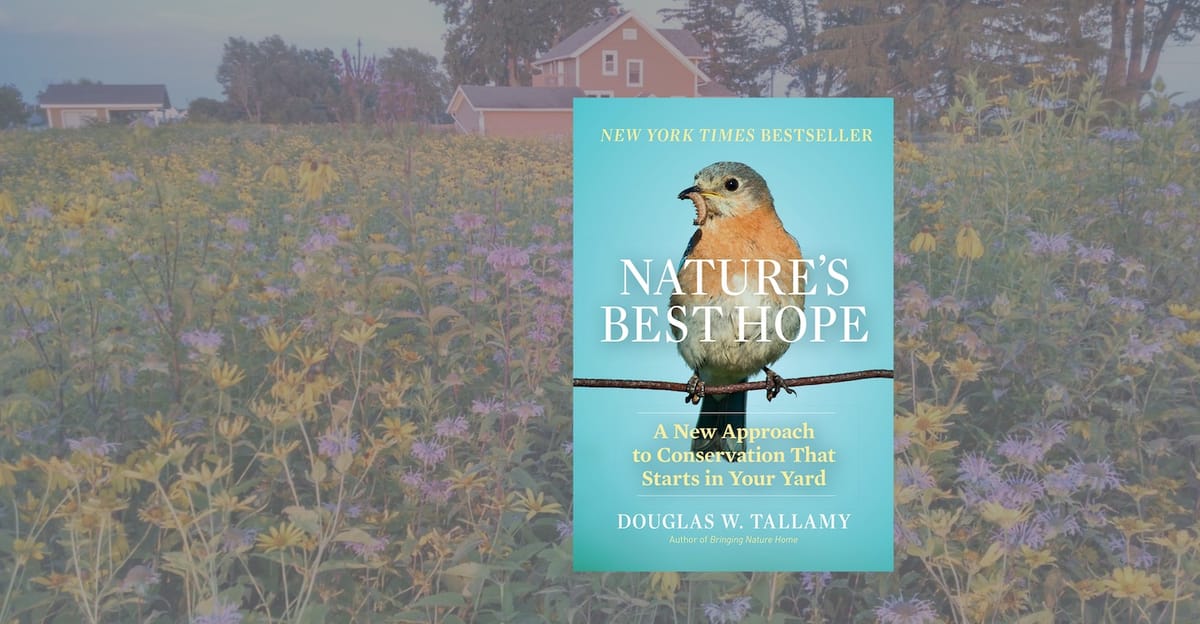
Fall Term is coming! Now with fly-tying
Fall dates are up! Registration opens August 13th at 07:00 Pacific for one Intro to Fly Fishing section, with class in the last week of September . If you've got a friend you want to get involved, spread the word!

But the big news for fall is that by popular demand, we're launching a Fly Tying For Beginners class. My buddy Mike Henderson is going to be leading it at PCC's Sylvania campus on Tuesday nights in September and October.

I'm really excited for those of you that are interested in getting into fly tying to get to work with Mike. Each class is going to be focused on a different easy-to-tie fly, and Mike will go over methods and techniques to fish it properly, including "dry dropper setups, indicator nymphing, Euro nymphing, and streamer fishing for both rivers and stillwater environments." All materials and tools will be provided, so you don't even need a vise or feathers.
Space is limited to ten participants, so be sure to jump on this one as soon as it is available (August 13th at 07:00 Pacific). If you have any questions, give me a shout and I can relay them to Mike.
That's it for this week! Current Flow State is a weekly newsletter from me, Nick Parish.
We can also connect on Bluesky 🦋, Instagram 📸, YouTube 🎥, and in the Fishcord 💬.
If you enjoyed this, please share it with a friend. We all need more fishing buddies. 💌
Read our editorial policy or browse the newsletter archives.
CFS Explorer members support and sustain the site, and our community. Learn more about membership benefits. If you're getting value from this work, consider becoming an Explorer member and giving back.
